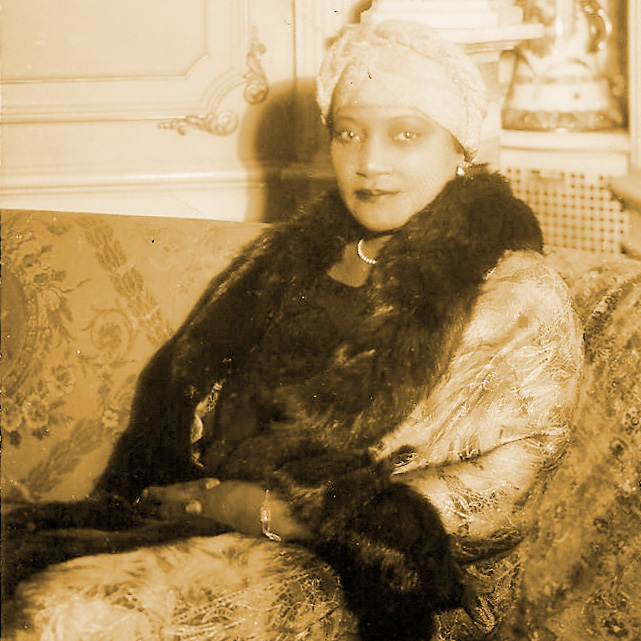The Harlem Renaissance would surely have happened without the presence of the socialite and philanthropist A’Lelia Walker. But there would have undoubtedly been fewer swell parties in gorgeous settings where high-quality liquor and high-quality conversation flowed and high achievers in the Black community congregated. And without A’Lelia there would likely have been far less of an impetus for chic Europeans and condescendingly curious members of Manhattan’s smart set to voyage above 110th Street (of all places) to see who was who and what was what at A’Lelia’s large, lavishly appointed home on West 136th Street.
“Wherever else one is invited or expected one must cancel all other plans if invited to A’Lelia’s,” a frequent guest noted. “She’s the Great Black Empress, She Who Must Be Obeyed.”
Joy Goddess: A’Lelia Walker and the Harlem Renaissance, by A’Lelia Bundles, chronicles the cosseted, complicated, and, at times, quite joyless life of A’Lelia, who was the only child of Madam C. J. Walker, the first self-made millionaire in the U.S. (so says the Guinness Book of World Records). Madam’s fortune derived from the development and marketing of a line of hair-care products and cosmetics for Black women, notably the best-selling ointment Wonderful Hair Grower. (Bundles, the granddaughter of A’Lelia’s adopted daughter, Mae, is also the author of the biography On Her Own Ground: The Life and Times of Madam C. J. Walker.)

A’Lelia was born Lelia McWilliams in 1885 in a cabin in Vicksburg, Mississippi. Her father, Moses, died when she was a toddler; soon after, little Lelia and her mother, then known as Sarah Breedlove, made their way to St. Louis, in part to re-unite with Sarah’s three brothers, in part to escape the Ku Klux Klan.
Sarah, a former laundress and a former agent for a salve that healed scalp infections, re-invented herself and made a name for herself after marrying her third husband, Charles Joseph Walker. She concocted her own hair-care formula based on what she’d learned from a pharmacist and from her brothers, all of them barbers, and then became Madam C. J. Walker. In so doing, she guaranteed, as Bundles notes, “that no white person would ever disrespect her by calling her by her first name.”
Madam’s example showed Lelia the power of a name. In June of 1923, in the middle of a particularly painful, mortifying divorce from her adulterous, fortune-hunting second husband (there would also be a third husband and a third divorce), she added a capital “A” and an apostrophe to her first name.
But A’Lelia didn’t always follow her mother’s example. The relationship between the two was loving but fraught, with Madam concerned that in shielding her daughter from the hardship she herself had suffered, she was crippling rather than empowering her. For her part, A’Lelia chafed at her mother’s attempts to control her spending and life choices. And like many children of highly successful parents, she felt she could never measure up no matter how hard she worked. (Actually, A’Lelia’s work ethic as it pertained to the Madam C. J. Walker Manufacturing Company was a tad anemic; she seemed more interested in the fruits of labor rather than in labor.)

Her gifts lay elsewhere. It was A’Lelia’s idea to establish a beachhead for the Walker hair business in Harlem, where the Black population had been growing since the turn of the 20th century, Bundles notes, pushed uptown by Irish gangs, then pushed again to make way for the construction of Penn Station. Several Black churches had relocated to Harlem to follow their flock. Now there would be a Walker beauty salon. And A’Lelia Walker would live above the store.
In 1913, she purchased a brownstone at West 136th Street. A year or so later, she bought the brownstone next door and combined the two buildings into an elegant town house.
In various forms and iterations, it would become a legendary destination—first as home base for A’Lelia (when the neighborhood got too noisy, she would decamp to an apartment on nearby Edgecombe Avenue); as a rental space known as Walker Studio, for weddings, meetings, and parties; and, concurrently, as an intimate cultural salon and performance space, Dark Tower, for not-yet-established artists and performers. Then there were A’Lelia’s parties.
“A’Lelia,” Bundles writes, “excelled at gathering people from disparate worlds into settings where they could converse, imbibe and dine in comfort. She accepted the truth that she would never duplicate her mother’s singular entrepreneurial acumen, but she inherited her knack for making bold moves and staging unforgettable evenings.”

The guest lists included the likes of Langston Hughes, Eubie Blake, Duke Ellington, lyricist Noble Sissle, frequent Fats Waller collaborator Andy Razaf, Zora Neale Hurston, cabaret singer Alberta Hunter, London photographer Olivia Wyndham, and British writer and professional iconoclast Osbert Sitwell. Sitwell turned up one night with the writer Carl Van Vechten, who immortalized A’Lelia in his 1926 novel, Nigger Heaven. Oddly, she wasn’t put off by the book’s title. George Gershwin, Paul Robeson, and Alfred Knopf were among those who turned up at Walker Studio for an after-party following an N.A.A.C.P. benefit.
In his memoir The Big Sea, Hughes, who anointed A’Lelia “joy goddess,” recalled that the goddess’s parties were always heavily populated affairs because “many guests found it impossible not to bring their own entourage when their friends discovered where they were going.”
The stock-market crash put an end to the merriment. A’Lelia died in 1931 of complications from hypertension, the same condition that had killed her mother a dozen years earlier.
Bundles makes a valiant effort, but she never quite manages to bring A’Lelia into focus or to explain her success. Was she witty? Was she charming? Who can say? Bundles does not.
Joy Goddess is best appreciated as a social history and an engaging portrait of Harlem in the second and third decades of the 20th century, even if it doesn’t quite beat taking the A train.
Joanne Kaufman is a New York–based journalist and critic


